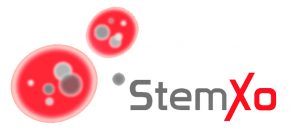3D Culture System
StemXO is actively developing optimized systems for 3-dimensional cell culture, both for organoid modeling and for scaled cell-based therapy manufacturing.
Traditional cell culture approaches involve the expansion of cells in 2-dimensional, adherent ‘monolayers.’ While this approach simplifies the examination of cell morphology and the addition of growth factors and harvesting of secreted products, it also places cells in an unnatural growth environment which does not accurately model their function in physiological settings.
StemXO’s proprietary cell culture system incorporates novel, state-of-the art innovations to culture stem and other cells, representing a variety of organ tissues, in 3D organoids in an efficient manner that allows for effective experimental modeling and high throughput drug/toxicology screening.
From the therapeutic standpoint, our innovative design also allows for significantly increased scalability for cell and cell-derived exosome therapies compared with conventional culture and expansion methods.
StemXO is also investigating in parallel approaches to engineer functional, implantable human organ tissues from 3D scaffolding templates, to address the vast unmet need for patients awaiting viable implant alternatives for liver, kidney and heart, as well as providing improved skin grafts and integrated peripheral nerve bridges.
Automated GMP Culture System
StemXO, in collaboration with our affiliate Robowind, is developing a fully automated, GMP-compliant closed system for compact and scaleable cell culture and secretory factor purification.
The efficient production of expanded cell lines for research as well as clinical therapeutics is currently limited by the costs of maintaining personnel for regular passaging, maintenance and monitoring. The multi-step transfer of cultures between incubator and sterile culture hood also introduces the possibility for the risk of contamination or variability in the growth environment.
StemXO’s automated culture system will revolutionize the cell manufacturing process by eliminating the need for direct investigator participation in a majority of the culture process, while providing a medium for monitoring culture conditions through high-resolution camera imaging.
As our system is closed/sterile, fully internal and GMP-compliant, it will also eliminate the need for often costly use of a GMP facility for biological manufacturing.
